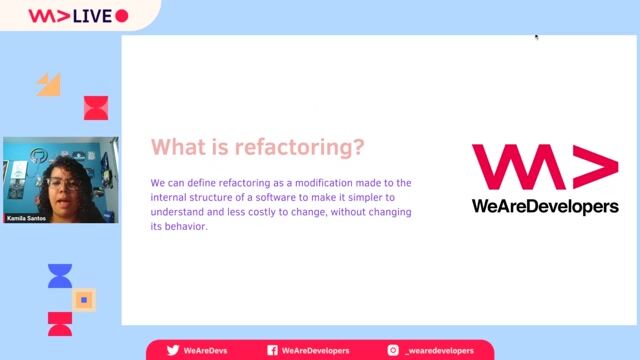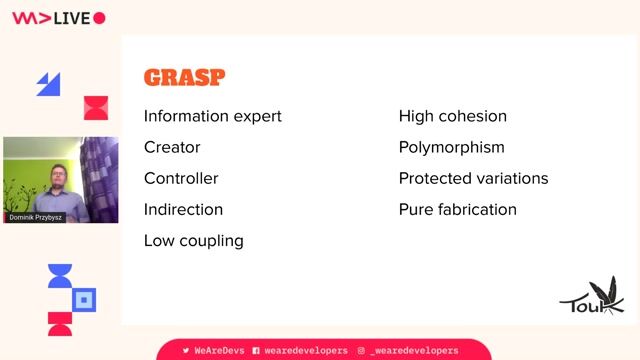Gil Zilberfeld
Dirty Tests And How To Clean Them
#1about 5 minutes
Why test code is often treated differently
Test code is often neglected because developers don't expect to revisit it and frequently copy-paste existing tests, duplicating code smells.
#2about 1 minute
The developer's job is writing maintainable code
The primary goal of a developer is to write code that works repeatedly, and clean code principles reduce maintenance time.
#3about 7 minutes
Defining clean code as communication with others
Clean code is simple, direct, and written like prose because it is primarily a form of communication between programmers.
#4about 6 minutes
Key attributes of clean and effective tests
Clean tests clearly show their intent, are focused on a single scenario, and use abstraction to separate domain logic from framework details.
#5about 4 minutes
Identifying common code smells in test suites
Common anti-patterns in tests include God classes, unhelpful comments, poor naming, and the use of magic numbers without context.
#6about 5 minutes
Refactoring duplicated code with a common setup
The first refactoring step involves moving duplicated variable initializations from individual tests into a common setup method.
#7about 4 minutes
Improving names and extracting helper methods
Further refactoring involves creating more descriptive test names, extracting repeated API call logic into a helper method, and using production constants to build robust URLs.
#8about 4 minutes
Using the builder pattern for test data setup
The Builder pattern simplifies the creation of complex data objects for tests by handling default values and making unique parameters more visible.
#9about 2 minutes
Separating concerns with an API call wrapper
Create an abstraction layer like an API call wrapper to separate low-level HTTP and JSON logic from the high-level domain language of the tests.
#10about 5 minutes
Signaling intent with descriptive constant names
Use named constants like `ANY_NUMBER` versus specific values to signal to the reader which test inputs are arbitrary and which are significant for the scenario.
#11about 3 minutes
Discussing hierarchical test classes and organization
Hierarchical test classes can be useful, but it is often better to favor composition over inheritance to avoid creating brittle test structures that are hard to change.
#12about 8 minutes
Career advice on starting in testing and consulting
Starting a career in testing provides a valuable mindset shift for building quality software, and self-employment offers flexibility but requires stepping out of one's comfort zone.
Related jobs
Jobs that call for the skills explored in this talk.
Featured Partners
Related Videos
 56:49
56:49Write tests you love, not hate
Jens Happe
 41:17
41:17I will have to refactor ! And now ? Refactoring Techniques in Java
Kamila Santos
 50:10
50:10Let's make your Java code Bug-Proof
Aicha Laafia
 45:39
45:39Give your build some love, it will give it back!
Amanda Martin
 39:16
39:16Cloud Chaos and Microservices Mayhem
Holly Cummins
 58:23
58:23Debugging Unveiled: Exploring Debugger Internals and Hidden Gems
Johannes Bechberger
 41:37
41:37Java with a Clojure mindset
Dan Lebrero
 48:42
48:42OOP revisited
Dominik Przybysz
From learning to earning
Jobs that call for the skills explored in this talk.


Software Engineer In Test
Portfolio Group Ltd
Manchester, United Kingdom
€50-55K
Azure
Cypress
Jenkins
TypeScript
+3
SDET Software Engineer in Test/Strong Java API Testing
Thrive IT Systems Ltd
Burgess Hill, United Kingdom
Senior
API
GIT
Java
REST
JUnit
+8

